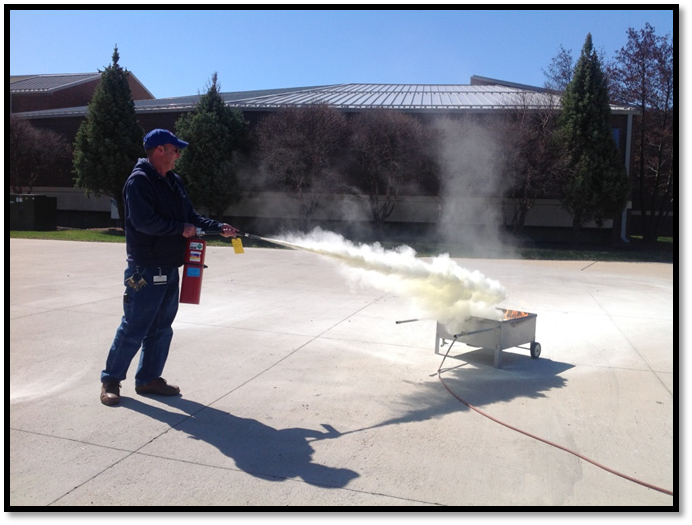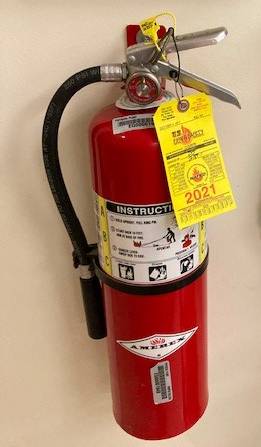Harper College will be closed Monday, May 26, in observance of Memorial Day.
There is always the possibility of a fire happening on campus, fire extinguishers can help minimize property damage and save lives if used properly. Stationed throughout campus, portable fire extinguishers are to be used on small or the beginning stages of a fire, not on a large-scale fire. Always call 911 and activate the fire alarm by pulling a fire pull station near an exit in the event of any size fire prior to using a fire extinguisher.
 You may attempt to extinguish the fire with a fire extinguisher if ALL of the following
are present:
You may attempt to extinguish the fire with a fire extinguisher if ALL of the following
are present:
Harper College uses an ABC combination fire extinguisher, which can be used on solids, flammable liquids or electrical fires, just not metal fires.
 Fire Triangle
Fire Triangle Eliminate any one of these items and you extinguish the fire
Weather permitting, Environmental Health and Safety Division holds annual Fire Extinguisher training for Harper Employees. This training is conducted with the Palatine Fire Prevention Division. If you are unable to attend the hands-on training session please take a few minutes to watch this informative Fire Extinguisher Training Video.
"The National Fire Protection Association (NFPA) is a global self-funded nonprofit organization, established in 1896, devoted to eliminating death, injury, property and economic loss due to fire, electrical and related hazards."
Check out their Youtube page to learn something new and find out more information on Fire Safety. National Fire Protection Association - YouTube
If you have little ones at home, why not check out NFPA Kids - Youtube, for educational videos to help teach children about fire safety.
"TED is a nonprofit devoted to spreading ideas, usually in the form of short powerful talks (18 minutes or less). Ted began in 1984 as a conference where technology, entertainment and design converged, and today covers almost all topics - from science to business to global issues - in more than 100 languages."
Mark Bezos: A life lesson from a volunteer firefighter | TED Talk